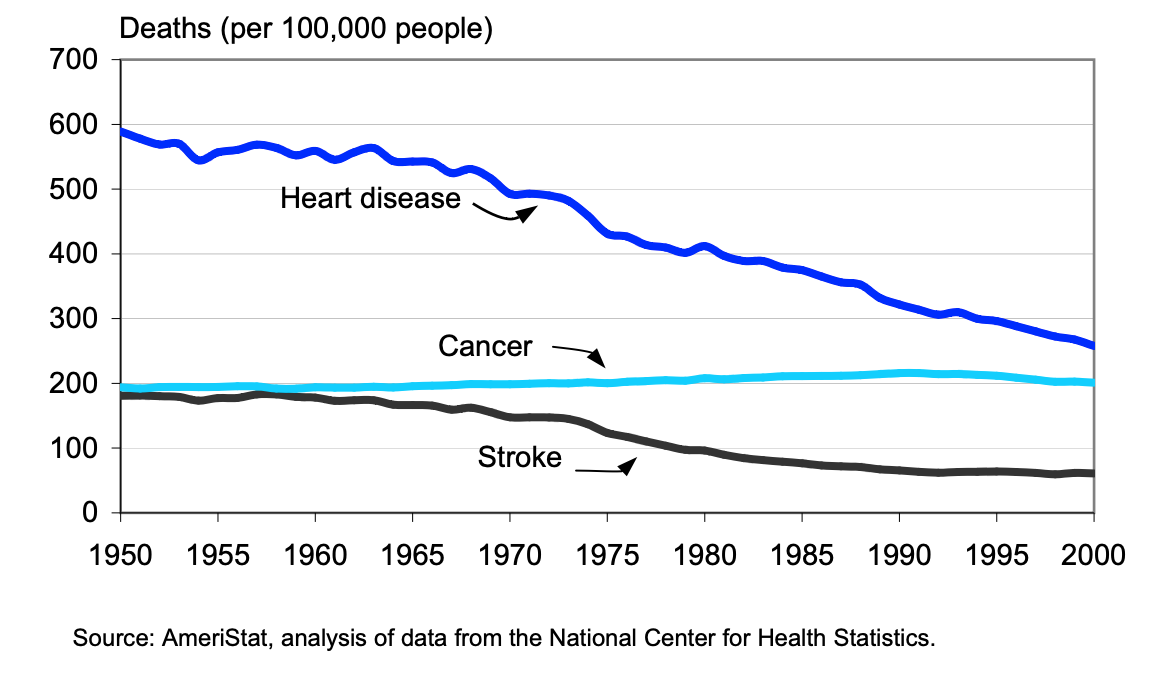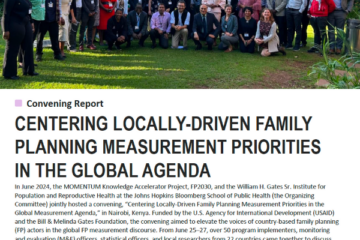
U.S. Trends in Heart Disease, Cancer, and Stroke
(December 2002) Deaths from heart disease have fallen dramatically over the past 50 years in the United States, from over 589 age-adjusted deaths per 100,000 people in 1950 to less than half that number in 2000 (258 per 100,000). Deaths from stroke declined over the same period, from 181 per 100,000 to 61 per 100,000.
Age-Adjusted Death Rates for Selected Causes of Death in the United States, 1950–2000

See Graph (PDF: 23KB)
The declines in heart disease and stroke can be explained, in part, by improvements in long-term and emergency care. Decreased smoking accounts for some of the improvement, but only in recent years. Improved diets and exercise are unlikely to have had a major effect because obesity has been increasing in recent years while death rates from heart disease and stroke have improved. An often-overlooked factor in the improvement in cardiovascular health has been the general decline of infectious diseases, since heart disease can be brought on by rheumatic infections. The better health and nutrition of mothers and children in the 1920s and 1930s, reflected in higher birthweights during those years, may also have rendered those generations less susceptible to heart disease as adults.
While deaths from heart disease and stroke have declined, cancer deaths have remained relatively constant since 1950, at about 200 deaths per 100,000 people.
References
A.M. Minino et al. “Deaths: Final Data for 2000,” National Vital Statistics Reports 50, no. 15 (2002); National Center for Health Statistics, “Age-Adjusted Death Rates for Selected Causes, Death Registration States, 1900-32, and United States, 1933-98” accessed online at www.cdc.gov/nchs/datawh/statab/unpubd/mortabs/hist293.htm, on July 22, 2002.






